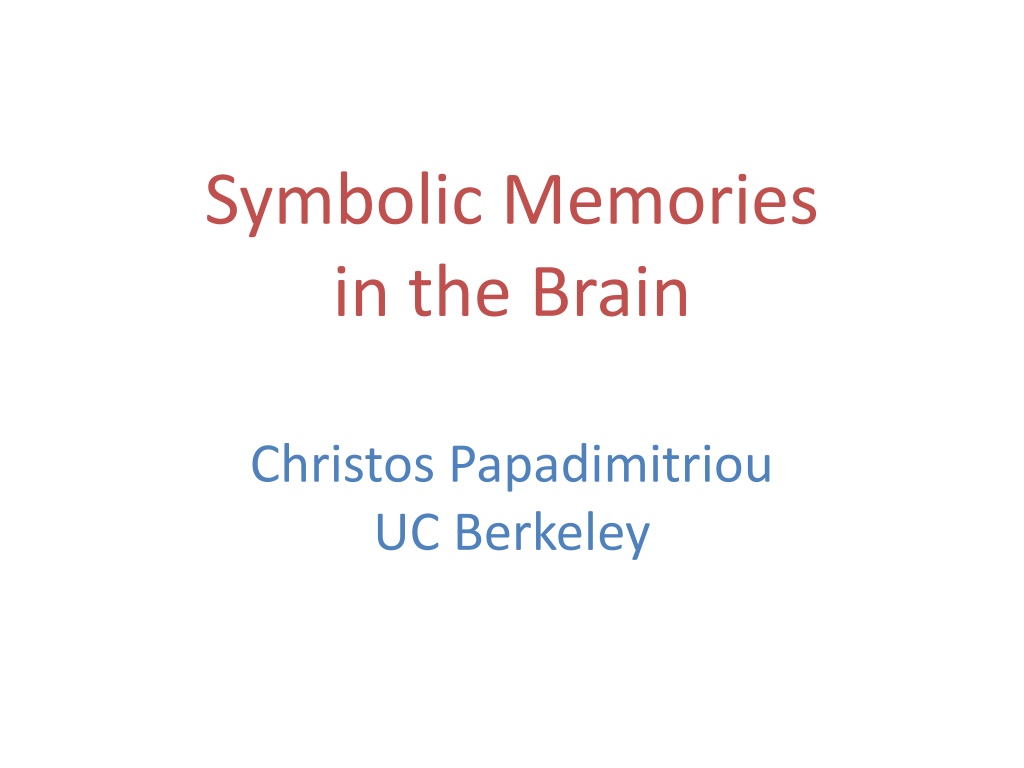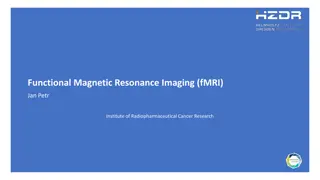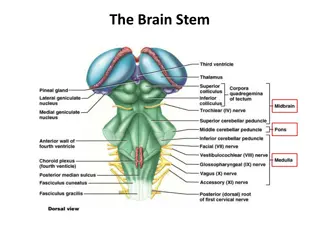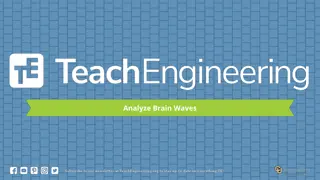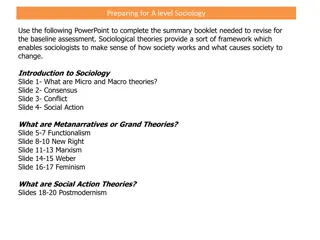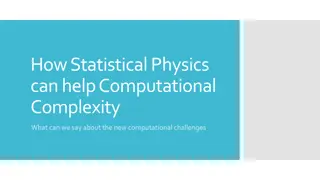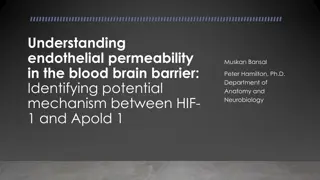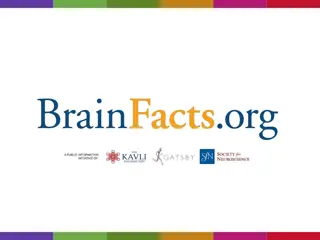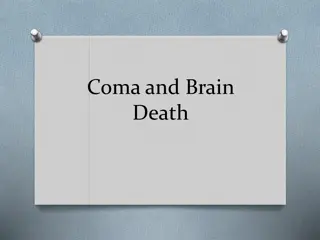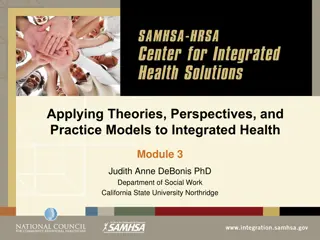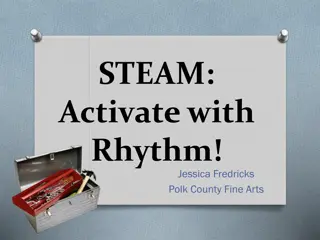Exploring Computational Theories of Brain Function
In this series of images and text snippets, the discussion revolves around the emerging field of computational theories of brain function. Various aspects such as symbolic memories, the relationship between the brain and computation, the emergence of the mind from the brain, and computational thinking about the brain are explored. Insights from prominent figures like John von Neumann and Les Valiant are highlighted, showcasing the quest to understand the brain's workings through computational models and algorithms.
Download Presentation

Please find below an Image/Link to download the presentation.
The content on the website is provided AS IS for your information and personal use only. It may not be sold, licensed, or shared on other websites without obtaining consent from the author. Download presentation by click this link. If you encounter any issues during the download, it is possible that the publisher has removed the file from their server.
E N D
Presentation Transcript
Symbolic Memories in the Brain Christos Papadimitriou UC Berkeley
work with Santosh Vempala Wolfgang Maass
Brain and Computation: The Great Disconnects Babies vs computers Clever algorithms vs what happens in cortex Deep nets vs the Brain Understanding Brain anatomy and function vs understanding the emergence of the Mind
How does the Mind emerge from the Brain?
How does the Mind emerge from the Brain?
How does one think computationally about the Brain?
Good Question! John von Neumann 1950: [the way the brain works] may be characterized by less logical and arithmetical depth than we are normally used to
Les Valiant on the Brain (1994) A computational theory of the Brain is possible and essential The neuroidal model and vicinal algorithms
David Marr (1945 1980) The three-step program: specs algorithm hardware
PCA? SGD? hashing? decision trees? So, can we use Marr s framework to identify the algorithm run by the Brain?? kernel trick? SVM? LP? SDP? EM? J-Lindenstrauss? FFT? AdaBoost?
Our approach Come up with computational theories consistent as much as possible with what we know from Neuroscience Start by admitting defeat: Expect large-scale algorithmic heterogeneity Start at the boundary between symbolic/subsymbolic brain function One candidate: Assemblies of excitatory neurons in medial temporal lobe (MTL)
The experiment by [Ison et al. 2016]
The experiment by [Ison et al. 2016]
The experiment by [Ison et al. 2016]
The experiment by [Ison et al. 2016]
The experiment by [Ison et al. 2016]
The experiment by [Ison et al. 2016]
The experiment by [Ison et al. 2016]
The experiment by [Ison et al. 2016]
The experiment by [Ison et al. 2016]
The Challenge: These are the specs (Marr) What is the hardware? What is the algorithm?
Speculating on the Hardware A little analysis first They recorded from ~102 out of ~107 MTL neurons in every subject Showed ~102 pictures of familiar persons/places, with repetitions ~ each of ~10 neurons responded consistently to one image Hmmmm...
Speculating on Hardware (cont.) Each memory is represented by an assembly of many (perhaps ~ 104 - 105 ) neurons; cf [Hebb 1949], [Buzsaki 2003, 2010] Highly connected, therefore stable It is somehow formed by sensory stimuli Every time we think of this memory, ~ all these neurons fire Two memories can be associated by seeping into each other
Algorithm? How are assemblies formed? How are they recalled? How does association happen?
The theory challenge In a sparse graph, how can you select a dense induced subgraph?
sensory cortex MTL, ~107 neurons ~104 neurons stimulus ~104 neurons [selection by inhibition]
NB: these are scattered neurons! ~104 neurons
A metaphor: olfaction in the mouse [al. et Axel 2011] 3 1 2
From the Discussion section of [al.et Axel] an odorant may evoke suprathreshold input in a small subset of neurons. This small fraction of ... cells would then generate sufficient recurrent excitation to recruit a larger population of neurons... The strong feedback inhibition resulting from activation of this larger population of neurons would then suppress further spiking In the extreme, some cells could receive enough recurrent input to fire without receiving [initial] input
sensory cortex MTL, ~107 neurons ~104 neurons ~104 neurons synapses random graph, p ~ 10 2
Plasticity Hebb 1949: Fire together, wire together STDP: near synchronous firing of two cells connected by a synapse increases synaptic weight (by a small factor, up to a limit)
But how does one verify such a theory? It is reproduced in simulations by artificial neural networks with realistic (scaled down) parameters [Pokorny et al 2017] Math?
Linearized model activation stimulus xj(t+1) = sj + i j xi(t) wij(t) plasticity synaptic weights wij(t+1) = wij(t) [1 + xi(t) xj(t + 1)]
Linearized model: Result Theorem: The linearized dynamics converges geometrically to xj = sj+ i j xi2
Nonlinear model: a quantitative narrative xj = sj+ i j xi2 1. The high sj cells fire 2. Next, high connectivity cells fire 3. Next, among the high sj cells, the ones with high connectivity fire again 4. The rich get stably rich through plasticity 5. A part of the assembly may keep oscillating (periods of 2 and 3 are common)
Mysteries remain... How can a set of random neurons have exceptionally strong connectivity? And how are associations (Obama + Eiffel) formed?
High connectivity? Associations? Random graph theory does not seem to suffice [Song et al 2005]: reciprocity and triangle completion Gn,p p ~ 10 2 Gn,p++ p ~ 10 1
birthday paradox! also, inside assemblies
Recall the theory challenge In a sparse graph, how can you select a dense induced subgraph? Answer: Through Recruiting highly connected nodes (recall equation) Plasticity Triangle completion and birthday paradox
Remember Marr? The three-step program: specs algorithm hardware
Another operation: Bind e. g., give isa verb Not between assemblies, but... ...between an assembly and a brain area A pointer assembly, a surrogate for give, is formed in the verb area Also supported by simulations [Legenstein et al. 2017] and same math
Bind: MTL assembly pointer give verb area
cf [Valiant 1994] Items: internal connectivity immaterial Operations Join, Link Association Formed by recruiting completely new cells Through orchestrated precise setting of the parameters (strengths, thresholds) Also, Predictive Join [P. Vempala COLT 2015] Can do a bunch of feats, but is subject to same criticism viz plausibility
Incidentally, a Theory Problem: Association Graphs Are these legitimate strengths of associations between ~equal assemblies? Connection to the cut norm (also with Anari & Saberi) 0.2 0.5 0.6 0.3 0.4
Btw, the Mystery of Invariants How can very different stimuli elicit the same memory? E.g. different projections, rotations, and zooms of a familiar face, the person s voice, gait, and NAME Association gone awry?
Finally: The Brain in context The environment is paramount Language: An environment created by us a few thousand generations ago A last-minute adaptation Hypothesis: it evolved so as to exploit the Brain s strengths Language is optimized so babies can learn it
Language! Knowledge of language = grammar Some grammatical knowledge may predate experience (is innate) Grammatical minimalism: S VP NP Assemblies, Association and Bind (and Pjoin) seem ideally suited for implementing grammar and language in the Brain.
